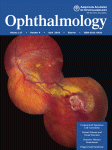In questo studio vengono confrontati tre sistemi per la misurazione della pressione oculare: il classico e diffuso Misurazione del tono oculare: tonometro di Goldman, dinamico (Pascal) e ORA analyzer.
Il confronto tra i sistemi ha mostrato che il tonometro di Goldman misura in media dei valori di 2,2 mmHG inferiori rispetto agli altri due. Le variazioni interosservatore (la differenza di misurazione ottenuta su stessi occhi da medici diversi) era di −0.8 (±3.9) mmHg per il Goldman, di −0.2 (±2.8) mmHg per il Pascal e di −0.3 (±3.9) mmHg per l’ ORA.
Gli autori concludono affermando che il sistema Pascal costituisce un eccellente sistema di misurazione mostrando la migliore ripetibilità e riproducibilità tra i tre dispositivi. Lo studio conferma che i valori ottenuti dai tre diversi apparati non sono intercambabili tra di loro e non possono essere direttamente confrontati per valutare la stabilità dei pazienti.
Aachal Kotecha, PhD, Edward White, BSc, Patricio G. Schlottmann, MD, David F. Garway-Heath, FRCOphth
Ophthalmology
April 2010, Volume 117, Issue 4, Pages 730–737
Objective To examine the repeatability and reproducibility of intraocular pressure (IOP) measurements obtained with the Goldmann applanation tonometer (GAT), the Pascal dynamic contour tonometer (DCT; Swiss Microtechnology AG, Port, Switzerland), and the Reichert Ocular Response Analyzer (ORA; Reichert Ophthalmic Instruments, Buffalo, NY). A secondary objective was to assess agreement between the devices.
Design Evaluation of technology.
Participants One hundred participants; a mixture of glaucoma suspects, patients, and control volunteers.
Methods The IOP measurements were obtained with the GAT, DCT, and ORA by 2 of 3 experienced clinicians. Keratometry (CC) measurements were made using the IOLMaster (Carl Zeiss Meditech, AG, Jena, Germany). Three ORA corneal compensated IOP (IOPcc) measurements were obtained before the instillation of anesthesia, after which 2 GAT IOP and 3 DCT IOP measurements were obtained in a randomized order. Central corneal thickness (CCT) was measured using an ultrasound pachymeter. The average ORA corneal response factor (CRF) and the average DCT ocular pulse amplitude (OPA) were determined. Intraobserver variability was calculated by the repeatability coefficient. Interobserver variability (measurement reproducibility) and device agreement were calculated by Bland-Altman analysis (mean difference [bias] and 95% limits of agreement [LoA]). The effect of corneal characteristics (CC, CCT, and CRF) on the IOP measurement differences between tonometers also was determined.
Main Outcome Measures Repeatability and reproducibility of the GAT, DCT, and ORA IOPcc and agreement between tonometers.
Results The repeatability coefficients for GAT, DCT, and ORA were 2.2, 2.3, and 4.3 mmHg, respectively. The intraobserver variability of ORA measurements was shown to be significantly associated with OPA and to a lesser degree with the quality of ORA waveform scans. The interobserver bias (95% LoA) was −0.8 (±3.9) mmHg for GAT −0.2 (±2.8) mmHg for DCT and −0.3 (±3.9) mmHg for ORA IOPcc. On average, GAT under-read both DCT and ORA IOP measurements by approximately 2 mmHg. The IOP measurement differences were better predicted by CRF than CCT.
Conclusions The DCT shows excellent measurement precision, displaying the best repeatability and reproducibility of the 3 tonometers. Corneal stiffness, as defined using CRF, was associated significantly with agreement between devices. The IOP measurements with each device are not interchangeable.
Financial Disclosure(s) Proprietary or commercial disclosure may be found after the references.

 Intraocular Pressure Measurement Precision with the Goldmann Applanation, Dynamic Contour, and Ocular Response Analyzer Tonometers
Intraocular Pressure Measurement Precision with the Goldmann Applanation, Dynamic Contour, and Ocular Response Analyzer Tonometers